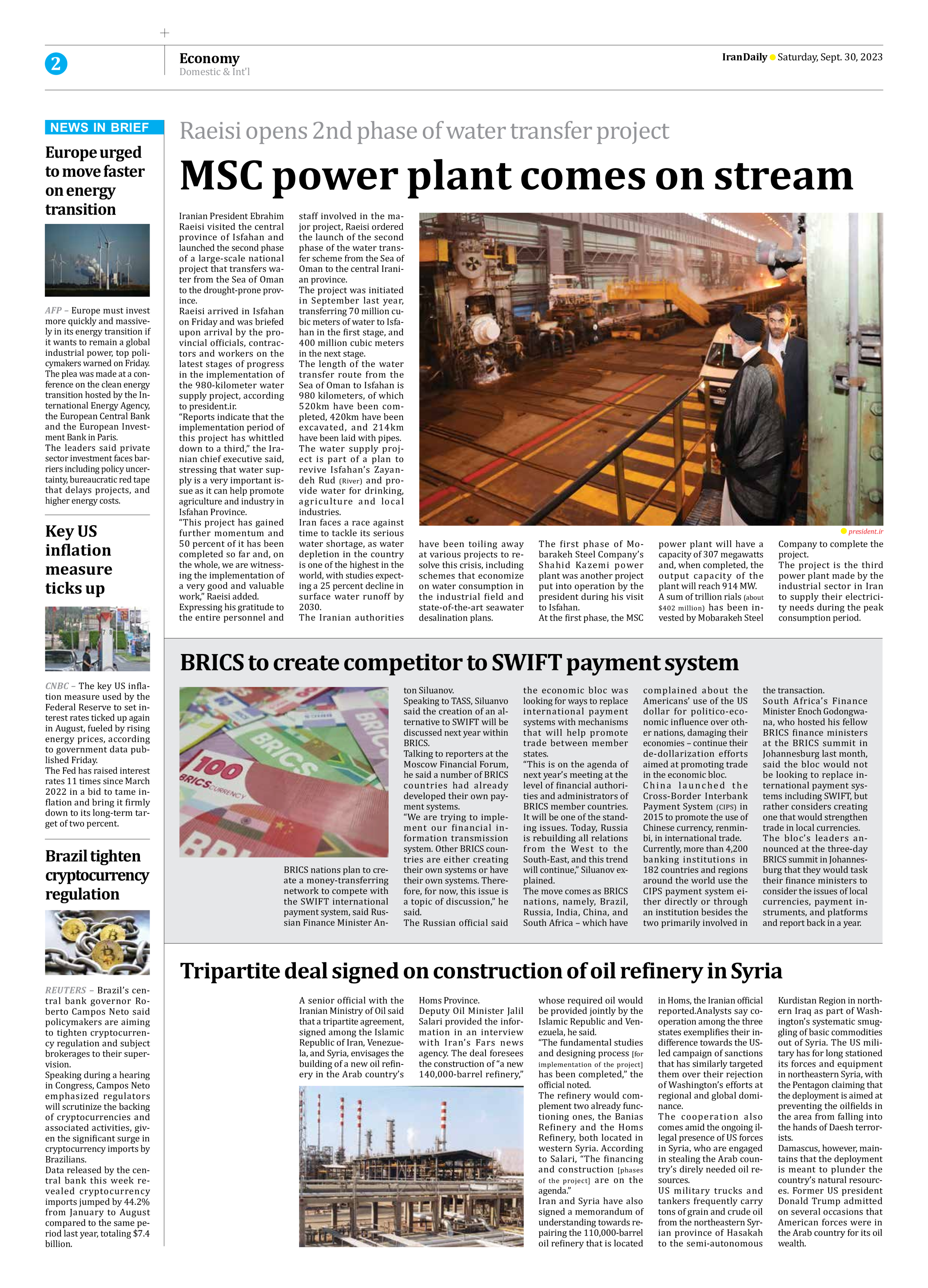
Raeisi opens 2nd phase of water transfer project
MSC power plant comes on stream
Iranian President Ebrahim Raeisi visited the central province of Isfahan and launched the second phase of a large-scale national project that transfers water from the Sea of Oman to the drought-prone province.
Raeisi arrived in Isfahan on Friday and was briefed upon arrival by the provincial officials, contractors and workers on the latest stages of progress in the implementation of the 980-kilometer water supply project, according to president.ir.
“Reports indicate that the implementation period of this project has whittled down to a third,” the Iranian chief executive said, stressing that water supply is a very important issue as it can help promote agriculture and industry in Isfahan Province.
“This project has gained further momentum and 50 percent of it has been completed so far and, on the whole, we are witnessing the implementation of a very good and valuable work,” Raeisi added.
Expressing his gratitude to the entire personnel and staff involved in the major project, Raeisi ordered the launch of the second phase of the water transfer scheme from the Sea of Oman to the central Iranian province.
The project was initiated in September last year, transferring 70 million cubic meters of water to Isfahan in the first stage, and 400 million cubic meters in the next stage.
The length of the water transfer route from the Sea of Oman to Isfahan is 980 kilometers, of which 520km have been completed, 420km have been excavated, and 214km have been laid with pipes.
The water supply project is part of a plan to revive Isfahan’s Zayandeh Rud (River) and provide water for drinking, agriculture and local
industries.
Iran faces a race against time to tackle its serious water shortage, as water depletion in the country is one of the highest in the world, with studies expecting a 25 percent decline in surface water runoff by 2030.
The Iranian authorities have been toiling away at various projects to resolve this crisis, including schemes that economize on water consumption in the industrial field and state-of-the-art seawater desalination plans.
The first phase of Mobarakeh Steel Company’s Shahid Kazemi power plant was another project put into operation by the president during his visit to Isfahan.
At the first phase, the MSC power plant will have a capacity of 307 megawatts and, when completed, the output capacity of the plant will reach 914 MW.
A sum of trillion rials (about $402 million) has been invested by Mobarakeh Steel Company to complete the project.
The project is the third power plant made by the industrial sector in Iran to supply their electricity needs during the peak consumption period.







